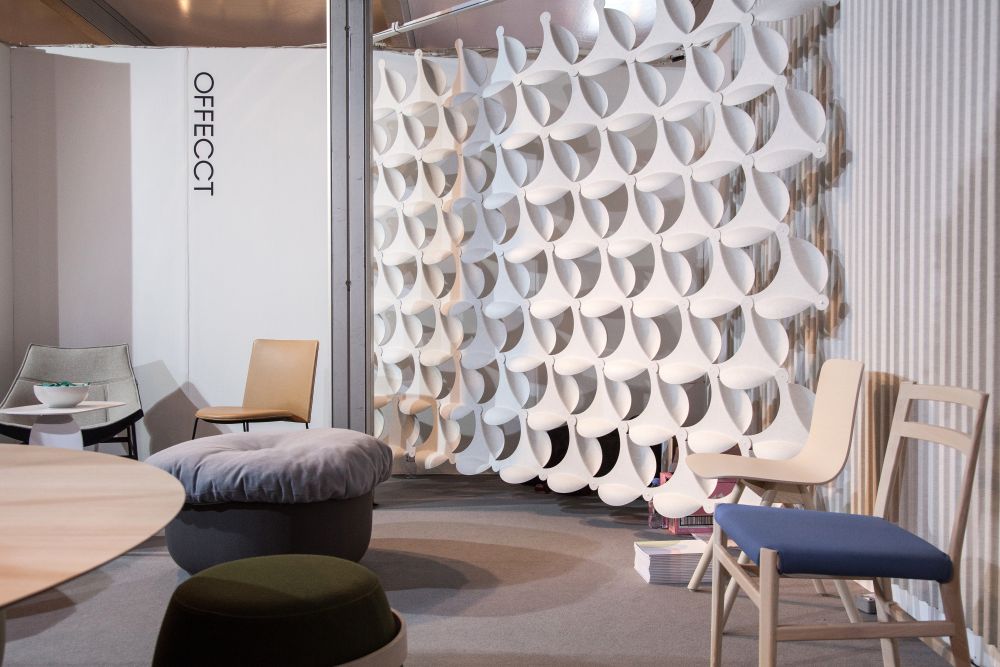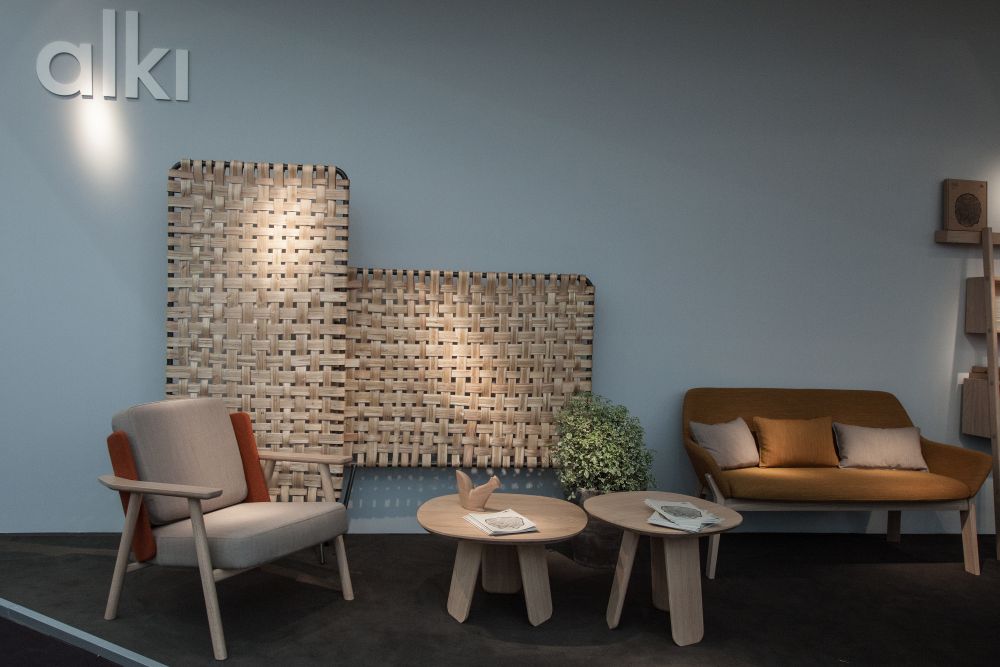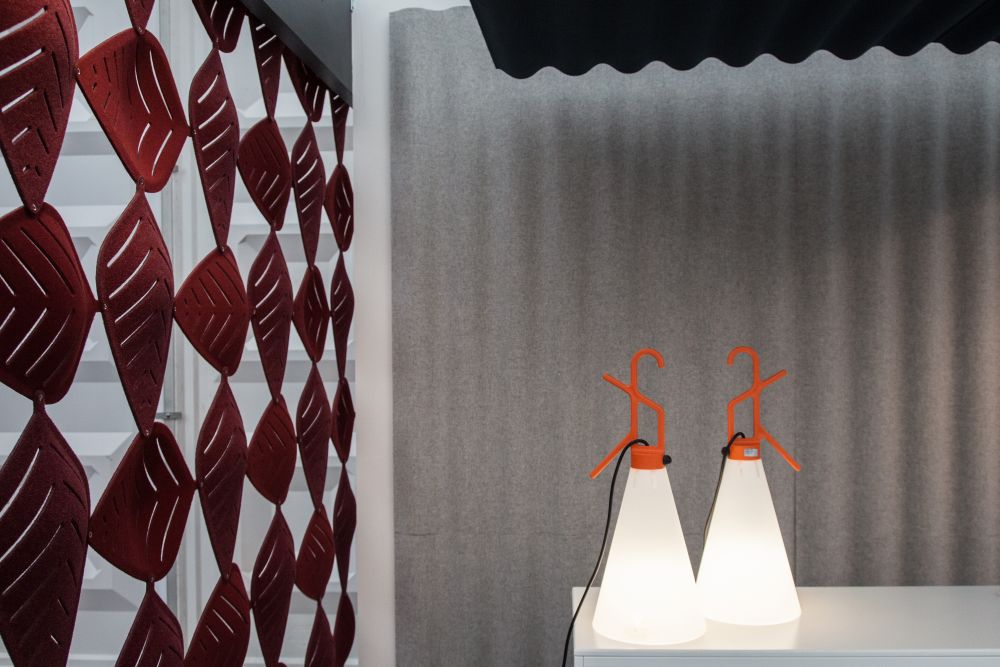Space dividers are very practical and useful in those cases when you want flexibility. In other words, you can have an open floor plan and you can have privacy at the same time if you use a room divider to occasionally separate a particular section of the space from the rest of the functions.

This is very useful when floor space is limited or when you want to stay away from solid, permanent walls that limit your options.
What Can You Use as a Room Divider?
Also known as room breakers, room dividers are perfect for creating private areas or separating certain parts of the room. Even if you can purchase products that are specifically labeled as room dividers, you can also get creative with what you actually use to limit spaces.
Bookshelves

Freestanding bookshelves and shelf units with cubbies are the ideal non-permanent solution for dividing a limited room into different zones. They provide a brand-new place to store your books and other items while also creating visual and physical distinction.
If you opt for bookcases with open backs, you have plenty of natural light into your new “room,” while those with doors and drawers will allow you to store items safely out of sight. The best aspect is that, unlike walls, you have the freedom to rearrange these parts whenever you want.
Folding Panels
Folding panels are screens that help separate a room and create private areas. A folding screen is a sort of free-standing furniture that is made up of multiple frames or panels that are joined together by hinges or other means.

They can be used for both functional and decorative purposes, and they can be created in a number of designs using a range of various materials. Folding screens can be used to divide a huge space and to alter the appearance of the space’s interior characteristics by simply folding them up.
Given that many folding screens are embellished with beautiful artistic designs and artwork, they can be used as ornamental elements in the interior design of a home.
Sliding Doors
This particular door type is one that opens horizontally and stays flush against the wall when opened. These doors are attached to a top or bottom track, depending on the model.
There are many different types of sliding doors that can be used as room dividers, including bypass doors, sliding glass doors, or pocket doors. One of the biggest benefits of opting for sliding doors include the little amount of space required for door opening and the relative ease with which they can be automated.
Screens

Privacy screens is just another term which is often used to describe folding panels, although screens aren’t typically foldable if you want to discuss semantics. Imagine screens as being just one large piece of material that helps create a private area in a room.
Curtains
You aren’t just limited to using curtains with your windows, as they can help create amazing private areas, although some would argue that throwing a curtain in the middle of the room can look quite odd.
If you plan to use curtains as room dividers, you need to consider the fact that they do require some sort of railing because they need to hang from somewhere. That means that you’ll need to make further room modifications to add curtains as room dividers.
They would work really well in the bedroom surrounding the bed or maybe to conceal a pantry or a storage area that doesn’t have any doors.
A very particular type of curtain is made from beads. These are particularly popular in Boho-style homes, but they are an amazing way to add a drop of personality to the room.

Pros and Cons to Modern Room Dividers
Before venturing off to spend money on modern room dividers, let’s take a look at what you can expect you get, with both good and bad aspects:
- Pro: They provide privacy. With a room divider, you can create two separate spaces that can come in handy in situations where, for instance, you have two kids sharing a room and each of them is very territorial about their side of the room.
- Con: But not full privacy. There are limitations to how much privacy a modern room divider can provide. For instance, it won’t be able to block sound.
- Pro: They are portable. Since most varieties of modern room dividers can be folded, they are easy to transport or store away when you don’t want to use them.
- Con: They can look awkward. Certain room dividers might be a little out of place in certain rooms (imagine a shelf divider thrown casually in the middle of the room).
- Pro: There are tons of models to choose from. From glass dividers to Japanese privacy screens, you’re bound to find something that matches your taste and existing room decor.
Materials Found in Modern Room Dividers
The material of a product will have an influence on its characteristics, so knowing about the different materials available will help you choose a room divider that matches your expectations.
Silk
For the longest time, Chinese room dividers have been utilized to enhance the aesthetics and elegance of a space by separating it from other rooms. In most cases, they are individually handcrafted decorative screens made of silk, among other materials.
While silk room dividers are gorgeous, they are also extremely fragile and easily broken, which is a drawback (and a real shame, because they are incredibly beautiful).
Wood

Even while they are still somewhat portable, hardwood room dividers are far heavier compared to their paper counters, and as a result, they are less likely to blow over or else be knocked over. Some designs, such as those with adjustable blinds and offset wood slats, will allow for the passage of air.
A solid and durable folding screen requires a slightly heavier wood frame that is extra rigid. This results in a more durable piece of furniture. Folding screens are an inexpensive office partition alternative to other types of room dividers
Canvas
Canvas is less difficult to clean than fabric but there are limitations to the environment in which you can place it (for instance, canvas privacy screens are not a good outdoor choice).
With plenty of different designs to choose from, canvas privacy screens also have plenty of limitations, such as the fact that they can’t block sound, so they can’t offer full privacy.
Paper
Paper panels are the smallest and lightest material available, as well as the most convenient to open, close, and move. Given the weight of 4, 5, and 6 panel screens, as well as 7-foot-tall panel screens, this is very crucial to remember.
The only panels that enable light to travel through and disperse the light wonderfully across the room are rice paper panels, which are lighter than those made from other materials.
With the most variety in design, this category is by far the most extensive of the bunch. This category also contains the broadest range of pricing points, which varies based on the quality of the design, other materials used in the construction, etc.

What to Look for in a Modern Room Divider
When shopping for a modern room divider, consider the following:
- Price – The price of a divider will depend on the actual product you’re looking to buy, its size, as well as the construction materials. A divider made from quality wood will surely be more expensive compared to one made from paper.
- Size – Room dividers are available in different sizes and choosing the right size will depend on the size of the area you’re looking to cover. There are certain room dividers that go all the way up to the ceiling.
- Materials – Make sure you check our section on “Materials Found in Modern Room Dividers” to see how different choices will affect the characteristics of a room divider.
Can It Be Stored Easily?
It really depends on the type of room divider you’re using. If you opt for a screen or a folding panel, this can easily be stored because it’s lighter in weight and doesn’t occupy that much space. If you’re using a curtain or a bookshelf as a room divider, you’re going to have to put in some extra work to take it down if you want to store it. Storing sliding doors is pretty much out of the question.
Does It Give the Privacy You Need?
Except for sliding doors which can literally create a new room, all other types of room dividers are pretty limited in terms of the actual privacy they can offer. For example:
- Bookshelves with open backs will allow you to see through the cubbies which are impossible to fill entirely to block out visuals.
- Blackout curtains may block visuals, but they are not sound-proof.
- Privacy screens and folding panels are pretty limited in size, so the private area you create will be rather small.
Does It Provide Extra Storage?
It also depends on what type of room dividers you opt for. Bookcases are the best solution for those who want to divide areas of the room and have some extra storage space while doing it.




There are lots of different ways in which you can use wall dividers and also lots of different types and styles to choose from. For instance, use a divider to define a space such as a foyer or a work area. If, for example, your front door opens directly into the living room, you can create your own little entrance hallway using dividers. Also, you can use these to delineate a small space that you want to use as a home office without having to dedicate an entire room to this function.








Dividers can also be used to conceal certain elements. For instance, if you don’t want everyone to see your messy open kitchen, you can close it off with a screen, a curtain or panels. Of course, there are many different room divider ideas to take into consideration so it would be useful to first figure out your priorities. It’s possible to use a divider as a decorative element in the interior design of a space in which case looks are the most important detail. You could, for example, use a floor-to-ceiling room divider to add height to a room and to draw the eye up.






Different types of dividers stand out in different ways. Some are meant to stand out visually, some are meant to be multifunctional while others are meant to make a statement. It’s also possible to divide a larger space with furniture in which case specialized room dividers are not needed. Multifunctional dividers are great for saving space. Something can work as both a separator and a headboard or a bookcase. A divider can also serve as a backdrop for a sofa. The design possibilities are numerous.



Designers offer a wide range of interesting room divider options and ideas but there’s also the possibility to choose something custom-made and unique or to even make your own dividers. You could repurpose things like old panel windows, screens, pallets, barn doors, curtains or rope to visually separate and organize your rooms. If you’re seeking something more unconventional, here are a few ideas: you can use bottles, vinyl records, car plates, PVC pipes, Lego pieces, beads, paper or painted canvas or you can even knit your dividers.






For increased flexibility, put your dividers on wheels so you can move them around as needed. If you decide to use barn doors, you can put them on track so you can easily open the space when needed. Another idea is to hang panels from the ceiling using hooks or to suspend rods, dowels, branches or pipes from the floor and ceiling to create a screen.
The post Modern Room Divider Ideas That Bring Out The Best In Open Floor Plans appeared first on Home Decorating Trends - Homedit.
0 Commentaires